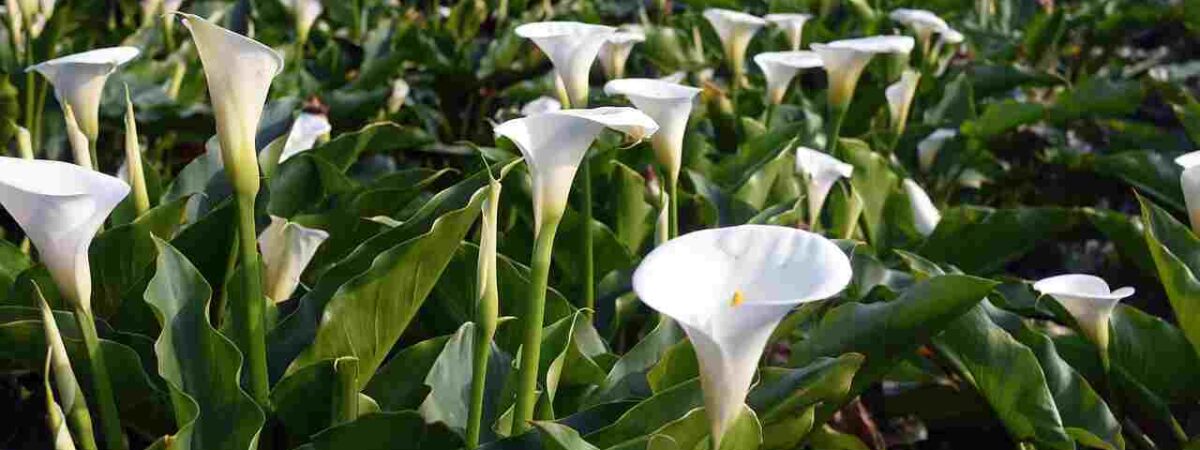Alocasia plants, also known as Elephant Ears, are a popular choice for indoor and outdoor gardening enthusiasts. With their large, glossy leaves and striking appearance, they add a touch of tropical glamour to any space.
Whether you’re a seasoned gardener or just starting out, growing and caring for Alocasia plants is not difficult, and with a little bit of knowledge, you can keep your plants thriving for years to come.
So let’s have a look at how to grow and care for alocasia plants.
Plant Overview
Alocasia is a genus of tropical and subtropical plants in the arum family, native to Asia and the Western Pacific. They are commonly known as elephant’s ears due to the shape of their leaves, which are often large and heart or arrow-shaped.
The plants typically have underground stems (rhizomes) and produce upright leaves and stemless, tubular flowers that are surrounded by a showy spathe. They are popular ornamental plants due to their striking foliage and are grown for their decorative leaves in gardens and as houseplants.
Alocasias need bright, indirect light and high humidity to thrive, and should be protected from frost. They are susceptible to a variety of pests and diseases, but with proper care can be long-lived and provide a tropical look to any space.
Types of Alocasia Plants
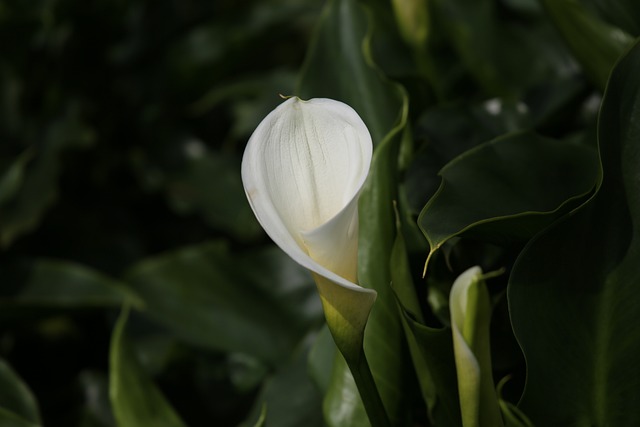
There are over 70 species of Alocasia plants, each with its own unique leaf shape and size. Some of the most popular species include Alocasia Amazonica, Alocasia Macrorrhiza, and Alocasia Regal Shields. The leaves of these species can grow up to 3 feet long and add a tropical touch to any room.
some of the most popular and widely cultivated include
Alocasia Amazonica:
Known for its large, dark green leaves with prominent veins and silver undersides.
Alocasia Macrorrhiza:
This species has large, shiny green leaves that are shaped like giant elephant ears.
Alocasia Frydek:
A hybrid species with green leaves and distinctive white veins.
Alocasia Odora:
Has large, fragrant white flowers and green leaves with silver-grey undersides.
Alocasia Reginula:
A small, compact species with green leaves and white veins.
Alocasia Polly:
A hybrid species with narrow, green leaves and a distinctive network of white veins.
These are just a few examples of the many types of Alocasia plants available. Each species has unique features, and all are prized for their attractive foliage.
How to plant Alocasia?
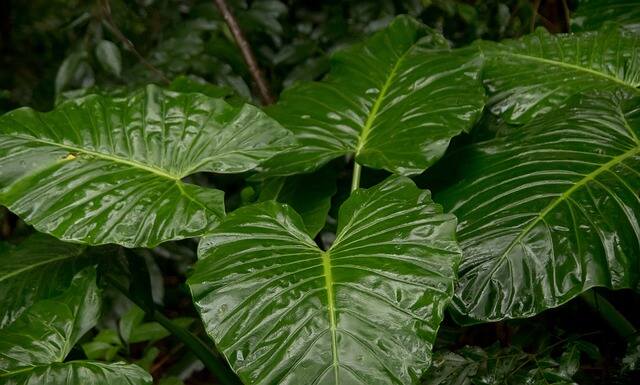
To plant Alocasia, follow these steps:
- Choose a well-draining potting mix that is rich in organic matter. Alocasia plants prefer slightly acidic soil with a pH between 5.5 and 6.5.
- Choose a pot with drainage holes to prevent water from collecting in the bottom, which can lead to root rot.
- Plant the Alocasia bulb or rhizome with the growing point facing upwards, and cover it with soil, leaving about one-third of the bulb exposed.
- Water the plant thoroughly after planting and then regularly to keep the soil evenly moist. Alocasia plants prefer high humidity, so consider placing a tray of water near the plant or misting it regularly.
- Place the plant in bright, indirect light, avoiding direct sun exposure. Alocasia plants will tolerate low light levels, but they grow best in bright conditions.
- Fertilize the Alocasia plant once a month during the growing season (spring to fall) with a balanced, water-soluble fertilizer.
- Watch for signs of pests, such as spider mites, and take appropriate action if necessary.
By following these steps, you can successfully plant and care for an Alocasia plant and enjoy its beautiful foliage for years to come.
How to care for Alocasia plants?
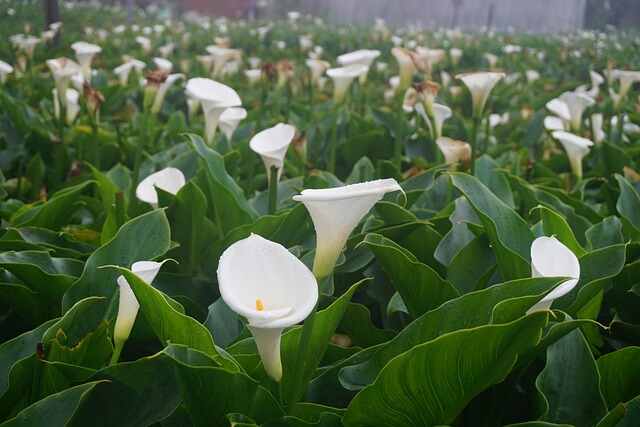
Light requirements
Alocasia plants require bright, indirect light to thrive. They can tolerate low light levels, but growth and foliage quality will be best in bright, diffused light. Direct sun exposure can cause sunburn or scorching of the leaves, so it’s important to provide some shade, especially in hot climates or during the brightest part of the day.
Ideal light conditions for Alocasia plants can be achieved by placing them near a window with filtered light or a few feet away from an east- or north-facing window.
If the light levels are too low, the plant may become leggy, with long stems and smaller leaves, so it’s important to provide adequate light to promote healthy growth.
Watering requirements
Alocasia plants prefer evenly moist soil and high humidity, but they are also sensitive to waterlogged conditions, which can lead to root rot. To water your Alocasia plant properly:
- Check the soil regularly to determine when it is time to water. Watering should be done effectively that the top inch of the soil should be moist, but not soggy.
- Water the plant thoroughly, allowing the water to drain through the pot, but do not allow the plant to sit in standing water.
- Reduce watering frequency in the winter when the plant goes dormant, but do not let the soil dry out completely.
- Consider using a humidity tray or misting the leaves regularly to maintain high humidity levels, especially in dry indoor environments.
It is important to strike a balance between keeping the soil moist and avoiding overwatering, as the latter can lead to root rot, which can be fatal to the plant. If you’re unsure if it’s time to water, it’s always better to wait an extra day or two before watering to avoid overwatering.
Soil requirements
Alocasia plants prefer well-draining soil that is rich in organic matter. A good potting mix for Alocasia plants should:
- Drain well: The soil should not retain excess water and should have good drainage to prevent root rot.
- Be rich in organic matter: Adding compost, peat moss, or other organic matter to the soil will help provide the plant with the nutrients it needs to grow.
- Be slightly acidic: Alocasia plants prefer to grow in slightly acidic soil with a pH between 5.5 and 6.5.
A good potting mix for Alocasia plants can be made by mixing equal parts of peat moss, perlite, and coarse sand or vermiculite. You can also purchase pre-mixed African violet or orchid potting mixes, which are suitable for Alocasia plants.
Be sure to use a pot with drainage holes to allow excess water to drain away, and avoid using heavy, dense soils that can retain too much water.
Temperature and humidity need
Alocasia plants are native to tropical regions and have specific temperature and humidity requirements.
Alocasia plants prefer warm temperatures and can be grown in temperatures between 60-90°F (15-32°C). They are sensitive to cold temperatures and should not be exposed to temperatures below 50°F (10°C).
plants prefer high humidity levels, similar to those found in their native tropical habitats. Indoor environments, especially those with air conditioning or heating, can be very dry, so consider using a humidity tray or misting the leaves regularly to maintain high humidity levels.
It’s important to provide the correct temperature and humidity conditions for your Alocasia plant to ensure its health and vitality. When grown under the proper conditions, Alocasia plants will produce lush, attractive foliage, making them a prized addition to any indoor garden.
Fertilizer
Alocasia plants benefit from regular fertilization, especially during the growing season (spring to fall). To fertilize your Alocasia plant:
- Use a balanced, water-soluble fertilizer: A fertilizer with an N-P-K ratio of 20-20-20 or something similar can be used.
- Dilute the fertilizer: Follow the instructions on the fertilizer package to dilute it before using. It’s usually best to use a weaker solution of fertilizer, applied more often than to use a strong solution infrequently.
- Fertilize monthly: During the growing season, fertilize your Alocasia plant once a month, or as directed by the fertilizer label.
- Reduce fertilizer in winter: During the dormant winter period, reduce the frequency of fertilization or stop fertilizing altogether.
It’s important to avoid over-fertilizing, as this can lead to fertilizer burn, which can damage the roots and foliage. Too much fertilizer can also cause salt buildup in the soil, which can be harmful to the plant. If you’re unsure about the correct fertilizer for your Alocasia plant, consult a local garden center or plant expert for advice.
How to prune or groom the Alocasia plant?
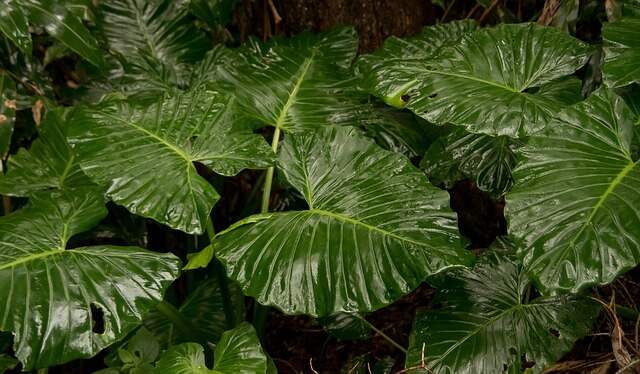
Alocasia plants do not require heavy pruning, but occasional grooming can help maintain their shape and promote healthy growth. To prune or groom your Alocasia plant:
- Remove yellow or damaged leaves: Cut back any yellow or damaged leaves to keep the plant looking its best.
- Cut back long stems: If the stems are getting too long and leggy, you can cut them back to encourage bushier growth.
- Divide the plant: If your Alocasia plant is becoming overcrowded, you can divide it and repot the individual sections into separate containers.
It’s important to use clean, sharp tools when pruning your Alocasia plant, and to make clean cuts just above a node (the point where a leaf or stem grows from the main stem).
Avoid over-pruning, as this can stress the plant and reduce its ability to photosynthesize and produce energy. If you’re unsure about the best way to prune or groom your Alocasia plant, consult a local garden center or plant expert for advice.
How to Repot the Alocasia plant?
Repotting an Alocasia plant can be done when it has outgrown its current pot or if the soil has become depleted of nutrients. To repot an Alocasia plant:
- Choose a pot: Choose a pot that is slightly larger than the current pot, with drainage holes to allow excess water to escape.
- Prepare the soil: Mix a good quality, well-draining potting mix with compost or peat moss to provide the plant with the nutrients it needs to grow.
- Remove the plant from its current pot: Gently remove the plant from its current pot, taking care not to damage the roots.
- Loosen the roots: Gently loosen the roots to remove any compacted soil and encourage them to spread out in the new pot.
- Plant in the new pot: Place the plant in the new pot, filling it in around the sides with the prepared soil mix. Press down gently to remove any air pockets.
- Water: Water the plant well to settle the soil and to help the plant adjust to its new pot.
It’s important to choose the correct pot size, as an Alocasia plant that is planted in a pot that is too large can retain too much water, leading to root rot. Repotting should be done during the growing season, when the plant is actively growing, to give it the best chance of establishing itself in its new pot.
Common pests and diseases
Like many plants, Alocasia can be susceptible to pests and diseases. Some common pests and diseases of Alocasia include
Mealybugs:
Mealybugs are small, white, cottony pests that can cause yellowing of the leaves and a sticky residue on the plant.
Spider mites:
Spider mites are tiny, red, or green pests that spin webs on the undersides of the leaves. They can cause yellowing and browning of the leaves and can be difficult to control.
Scale insects:
Scale insects are small, flat, brown pests that feed on the sap of the plant. They can cause yellowing and stunted growth and can be difficult to control.
Root rot:
Root rot is caused by overwatering or poorly draining soil, and can cause the roots to rot, eventually leading to the death of the plant.
Leaf spot:
Leaf spot is caused by a fungal or bacterial infection, and can cause yellow or brown spots on the leaves, eventually causing them to fall off.
To control pests and diseases on your Alocasia plant, it’s important to keep the plant healthy by providing the correct growing conditions, such as good light, moisture, temperature, and humidity.
Regular inspections of the plant and early detection of pests and diseases can also help prevent or minimize their impact. If you’re unsure about how to control pests or diseases on your Alocasia plant, consult a local garden center or plant expert for advice.
Conclusion
In conclusion, Alocasia plants are attractive and exotic-looking plants that can add a touch of tropical beauty to any indoor or outdoor space. They have specific requirements for light, watering, soil, temperature, and humidity, and they may be susceptible to pests and diseases if not properly cared for.
Proper care and maintenance, including regular grooming, repotting, and monitoring for pests and diseases, can help ensure that your Alocasia plant thrives. With their unique and striking appearance, Alocasia plants make a great addition to any collection of indoor or outdoor plants, and they can provide a lush and exotic touch to any living space.
You may also like to read
Mulch Madness: A Guide to the Different Types of Mulch for Your Vegetable Garden

